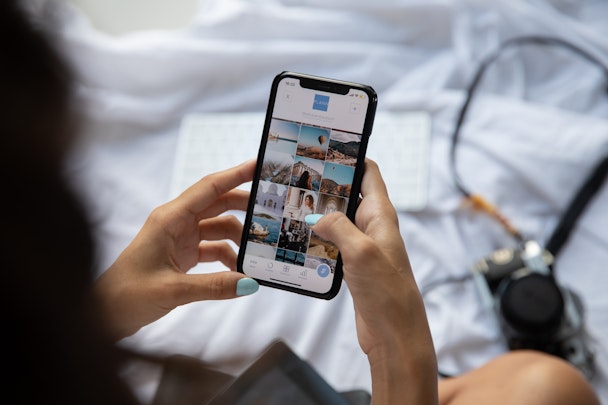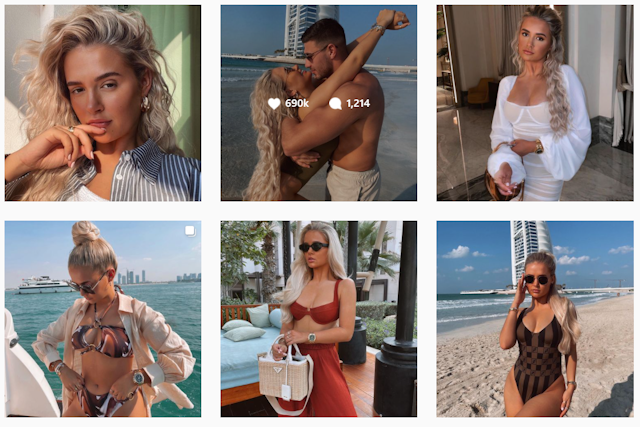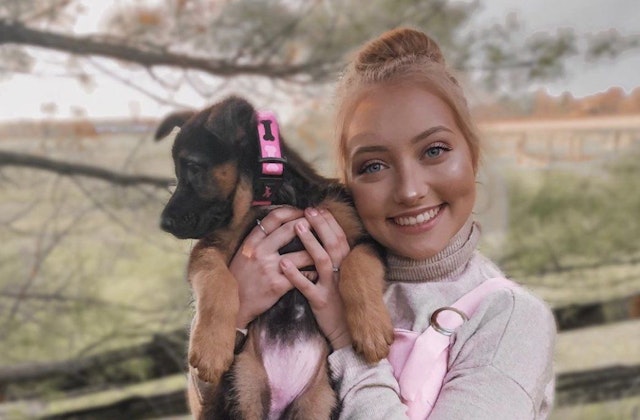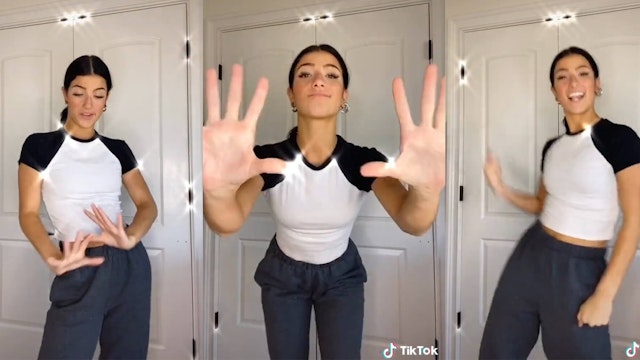
Advertisement

Brands are turning to creators to produce relatable and purpose-driven content amid the global health crisis
Influencers have drawn ire – and even death threats – for globe-trotting freely while most of us obey strict stay at home orders. However, a bunch of bad apples clearly hasn’t upset the entire cart, with brands finding new value in different kinds of influencer relationships amid the global health crisis.
Since the turn of the year, there’s been a raging debate as to why social media stars have been allowed to travel to luxury destinations when everyone else is told to stay at home during the deadliest pandemic in modern history.
First in the firing line was Kim Kardashian’s 40th birthday party, celebrated on a private island in Polynesia with 30 of her “closest friends” who wanted to “pretend things were normal just for a brief moment in time”. By January, a plethora of UK reality TV stars were stung by criticism over their extravagant ‘business trips’ to Dubai, with Instagram reels of lavish dinners and sunsets on yachts frustrating followers back home hunkered down for lockdown 3.0.
Despite their insistence that they were working and creating content for brands, those involved in the Dubai debacle were derided as tone-deaf and scolded for seemingly bending rules that allowed essential travel only. UK home secretary Priti Patel even weighed in, and things reached a head when influencer Sheridan Mordew appeared on daytime TV, defending her lockdown trip to Dubai to film workout videos as vital.

Despite the criticism, a few bad apples have not upset the entire cart. In fact, according to a study from Rogue Media – which analysed the Instagram accounts of 50 popular social media stars who were pictured abroad this winter – likes per post for influencers abroad were up 144% compared to their average.
What’s clear is that locked down audiences are very much turning to influencers for their daily distraction fix in lockdown, with social media screen time and usage on the up; Instagram-owner Facebook reported 12% user growth in the three months to December 2020 alone.
In turn, brands are finding a renewed value in the influencer relationships they have spent years forging, turning to creators to produce relatable and purpose-driven content amid the global health crisis and experimenting with fresh platforms in the process.
While marketing spend was slashed in 2020, brands still set aside investment for talent work and that’s not set to stop.
The influencer marketing landscape is forecast to grow by 15% in 2021 to a whopping $5.86bn. So, it’s safe to say the creator economy hasn't lost its selling power, even in the toughest of times.
Dan Parker is a former marketing manager at Syco Entertainment, where he helped catapult One Direction into the spotlight. Today, he spearheads UK talent agency 84World, managing brand partnerships and endorsements for the likes of Made In Chelsea’s Binky Felstead and Love Island’s Kem Cetinay among other celebrity influencers.
For him, recent damaging headlines haven’t put too much of a dent in brands' influencer plans.
“Influencers with authenticity, which is key, haven’t lost their lustre for working with brands, as long as they are brands that they genuinely like and want to work with, and vice versa,” he says.
With aspirational trips, glamourous events and luxury escapism on pause (for most) influencers right now, Parker is seeing brands shift their creator investment into campaigns around self-care, mental health, fitness and cooking.
“Spend has tripled across these categories for us over the last 12 months,” he reveals.
Mobbie Nazir, chief strategy officer at We Are Social, observes a similar trend. She says clients aren’t turned off by influencers, but they’re being more discerning about seeking out public figures who use their platform responsibly. "Reliable idols" are in demand.
“In the backdrop of a global pandemic, traditional influencers who previously focused on the allure of beauty, success and luxury have come across as unrelatable and inauthentic to many,” she explains.
“Particularly in contrast to those who’ve been using their platforms to educate responsibly, along with a growing interest in following people on social media who are credible experts in their field, rather than lifestyle influencers.”
She points to the likes of US infectious diseases expert Dr Anthony Fauci, who has developed the kind of internet presence that many senior figures (especially politicians) can only dream of building, as the kind of person brands are interested in working with right now.
Indeed, the NHS and UK government have been working with influencers on public health campaigns. The latter spent £63,000 last year on a push that saw 42 social media stars promote Test and Trace.
In the US, Los Angeles-based influencer marketing agency Xomad has been partnering with local influencers on a Social Leader Council, which taps into its network of micro-influencers to spread PSA messaging.
Brands have been getting in on the act as well. Last year, P&G teamed up with TikTok influencer Charli D’Amelio to promote social distancing via the #DistanceDance, while Nivea has been running a campaign spearheaded by influencers encouraging people to share the small acts of kindness they’ve experienced over the last year under the #ShareTheCare hashtag.
"Audiences aren’t unfollowing beautiful people. But they want them to be more than a pretty face, and to prove that they’re worth their place in the feed,” says Nazir.
Jidé Maduako, influencer-turned-chief executive of TikTok influencer agency Yoke Network, argues the creator economy is “showing its grown-up credentials through its sense of purpose and values” in the pandemic.
“Yes, this new breed of influencers likes to make money, but they also want to help people and the planet too, whether it’s focusing on green issues, encouraging us to embrace diversity, or helping dismantle stereotypes about neurodiversity,” he says, pointing to @paigelayle who campaigns around autism awareness and @zachv_pat who is big on body image issues.
“Then there’s the TikTok users who clubbed together to design, build and patent a pill bottle to improve the quality of life of people with Parkinson’s disease.”

He also seconds Nazir’s point, saying he’s noted an uptick from clients seeking out creators with unique talents too.
“People that are magicians or dancers or doing something unusual are getting more attention from brands because audiences want engaging, entertaining content while they’re stuck in lockdown.
"Before the pandemic, advertisers were spending a lot more on lifestyle creators.”
It’s not just the content that’s flipped either; the platforms influencers are using to connect with audiences have also evolved throughout the pandemic.
Live-streams, podcasts and digital-first content are now key to brands’ media plans in a world where they can’t (and really shouldn’t) fly creators around the world or creators to come to a venue.
This means more companies are collaborating with creators via the likes of live-streaming and podcasts, or even giving them free rein to create their own content. “That’s been one of the big changes,” says Maduako.
Stacey Neumann, senior strategist at Wunderman Thompson, says the explosion of TikTok, which has seen its users grow 800% in the US alone since 2018 and now has 2.2bn downloads under its belt globally, has created the perfect “mass reach” storm for creators to be able to produce more relatable content in lockdown.
"Consumers' tolerance for low production value has created a major opportunity for brands to adopt creative innovation that can be filmed right from their phones," she says. "Brands can leverage UGC, content creators and influencers to help by-pass the increasingly complex production process and still deliver a return on investment."

84World boss Parker concurs, noting that clients are rethinking how they engage followers across all platforms.
“We’ve seen more social takeovers, Q&A functions via Instagram stories, Instagram and TikTok Lives,” he says.
“There's an eagerness from brands to utilise influencers to bring audiences into a dialogue and conversation, at a time where many audiences are disconnected from friends, family and colleagues.”
Despite wider mainstream media headlines on influencers and what played out with a small group recently, Parker argues there’s “never been stronger confidence and trust in the influencer industry from brands”.
That growth, he says, will only continue in the next 18 to 24 months and those brands that have entered the space with confidence during the pandemic will look to put even more focus on influencers moving forward.
“Naturally, we’ll see campaigns look to marry between content and other areas such as events, with the lifting of restrictions.
"Authenticity between influencer and audience will remain as vital as it is now to have a true impact, and the dialogue between brand and influencer will only get stronger in terms of campaign creatives and making the experience the best it can be for the audience.”